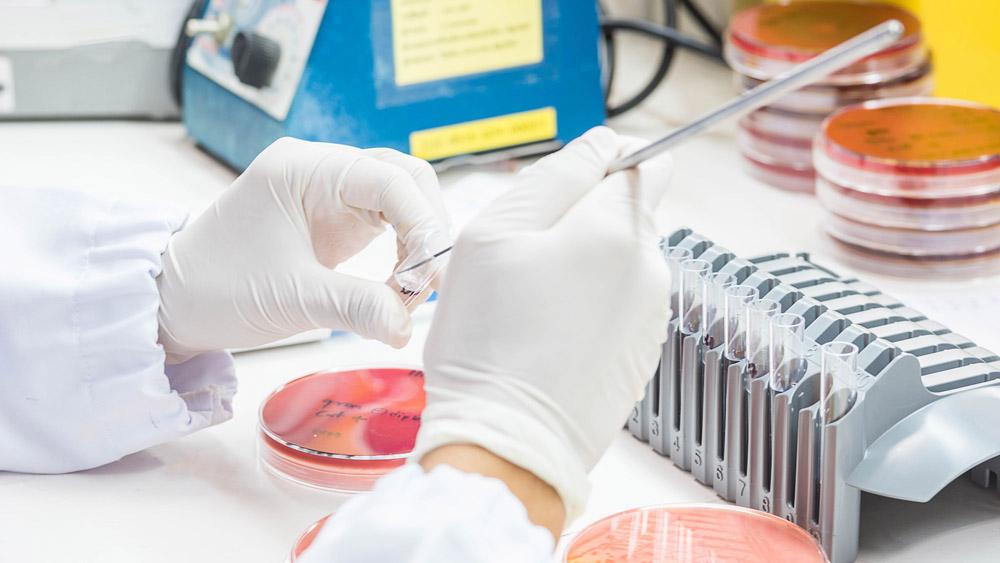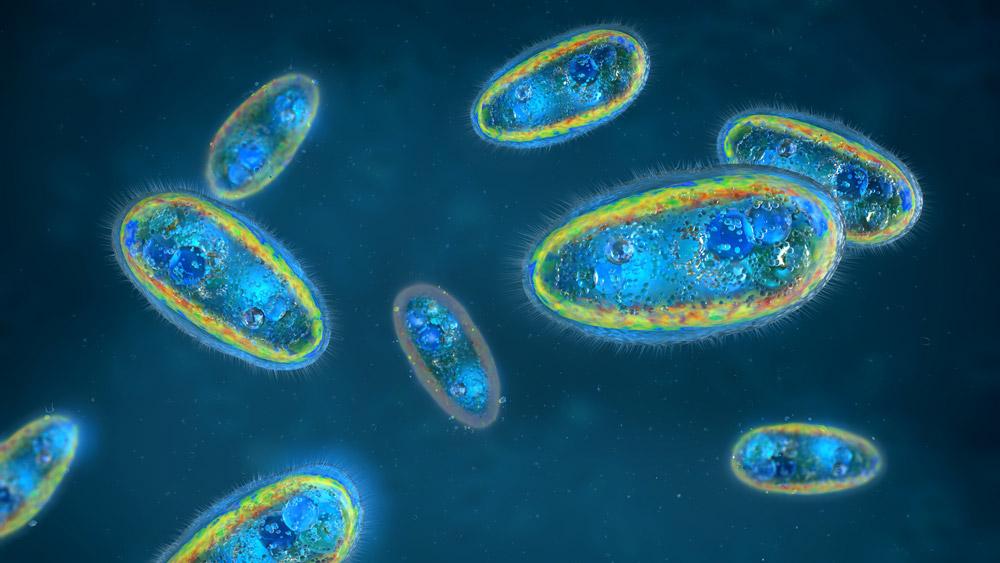RESEARCH

GENOME SURVEILLANCE
One Health Genomic Surveillance (OHGS) is the continued investment approach in sustainable control and prevention of emerging and reemerging foodborne, waterborne, and zoonotic infectious diseases globally. The OHGS strategy employs broad genome data sharing and cross-sectoral collaboration across the broad scientific and regulatory communities to address One Health Challenges at both national and international levels. It allows for more accurate identification of pathogens compared to conventional diagnostic tests, tracking the spread of pathogens, unravelling their evolutionary trends, and potentially predicting their pathogenicity, virulence, and environmental persistence, including persistence of bacterial pathogens under antimicrobial pressure.
Program Goals
To contribute to our in-depth understanding of the genetic diversity, evolutionary trajectories, and transmission sources of foodborne, waterborne, and zoonotic pathogens both regionally and globally via their Whole Genome Sequencing (WGS) and analyses.
To advance the knowledge of the molecular-genetic mechanisms of pathogenicity, virulence, and environmental persistence of these and other infectious agents, using WGS.
To support surveillance of and rapid response to foodborne, waterborne, and zoonotic diseases for improving ONE Health nationally and internationally, using WGS and integrative genomic analyses.
To advocate and implement the state-of-the-art methodologies of WGS and its applications across One Health research and educational programs regionally.

ANTIMICROBIAL RESISTANCE
Antimicrobial Resistance (AMR) poses a significant threat to human and animal health, having also a devastating impact on agriculture and different ecosystems globally. Aberrant usage of antibiotics in the human, animal, and environmental settings, coupled with the dissemination of resistant bacteria and antimicrobial resistance genes (ARGs) among these settings and globally, are the primary factors underlying the continuous emergence and persistence of AMR worldwide. The problem with ARM has been worsened due to the development of cross- and co-AMR in zoonotic bacterial pathogens spreading within and between the populations of various animal species, including humans. Besides, wastewater and agricultural runoffs, along with natural reservoirs of ARGs and their horizontal transfer, represent the important additional sources that aid the emergence and transmission of AMR across these pathogens. Given the transmission of antimicrobial-resistant pathogens through interactions among humans, animals, and polluted environments, it is imperative to take urgent action with One Health research strategies and approaches to effectively control and prevent infectious diseases caused by these pathogens.
For combating AMR, the OHI research initiatives, in line with its strategic goals, consider the Five Pillars of the One Health Priority Research Agenda focusing on Transmission, Integrated surveillance, Interventions, Behavioral insights and change, Economics, and policy.
Program Goals
To determine the prevalence of AMR in different reservoirs, and its evolutionary trends nationwide, regionally, and globally
To unravel new molecular-genetic mechanisms and rare phenotypic traits underlying the emergence of AMR in natural populations of foodborne, waterborne and zoonotic bacterial pathogens, and to determine the reservoirs and transmission sources of these organisms and their resistance determinants
To uncover new molecular-genetic mechanisms and rare phenotypic traits that lead to the emergence of AMR in natural populations of foodborne, waterborne, and zoonotic bacterial pathogens
To identify the AMR reservoirs and transmission sources, and its determinants
To generate data for risk assessments of foodborne, zoonoses, and environment-associated AMR hazards
To support One Health educational efforts aimed at controlling and preventing AMR hazards at national and regional levels

MICROBIAL ECOLOGY & INTERACTIONS
Understanding the broad ecological, evolutionary, and molecular mechanisms governing microbe-host interactions, as well as microbiome assembly and functions, is crucial for developing effective One Health predictive transdisciplinary frameworks and interventions. Given the intricate nature of microbial intra- and interdomain interactions, along with their interactions with various environments, it is imperative to consider these organisms and microbiomes in in toto. This passage also underscores the importance of gaining a deeper comprehension of microbial ecotones, as they are essential keystone components of complex biological systems. By understanding microbial ecotones, we can better map the interconnectivity of microbes within these systems. Furthermore, the One Health research agenda has significantly relied on the exploration of functional microbiomes, their diversity, and evolution. This effort continues to shed light on a wide range of microbial groups and communities and their changes, and on their roles in maintaining one health versus aberrant health or safety outcomes respectively across diverse macro-ecosystems and microenvironments, encompassing human, animal, and food domains.
Program Goals
To advance the understanding of molecular-genetic mechanisms that drive microbial-host interactions, microbial survival, and phage-host interactions
To expand the breadth of knowledge of microbiomes and their variations in diverse aquatic, recreational and agricultural ecosystems, as well as in gut and other microenvironments associated with humans and industrially important animals
To contribute to the establishment and development of educational MS and Ph.D. programs in the fields of microbial ecology and interactions.

RECENT PUBLICATIONS BY OHI TEAM MEMBERS
Tsiklauri R, Kobakhidze S, Kotetishvili M. Interactive networks of donors and recipients of the TetM gene and its evolutionary dynamics across the bacterial domain. Sci Rep. 2025 Oct 9;15(1):35312. doi: 10.1038/s41598-025-19304-z. PMID: 41068170; PMCID: PMC12511340. https://www.nature.com/articles/s41598-025-19304-z
Tsiklauri R, Kobakhidze S, Tsereteli M, Jimsherishvili L, Kakabadze N, Koulouris S, Kotetishvili M. Genome data cross-contamination versus interdomain recombination: Equus caballus and Mus musculus genetic loci in the insertion sequence-rich genomes of two clonally related methicillin-resistant Staphylococcus aureus strains from China. BMC Microbiol. 2025 Apr 27;25(1):251. doi: 10.1186/s12866-025-03951-3. PMID: 40289079; PMCID: PMC12034162. https://pubmed.ncbi.nlm.nih.gov/40289079/
Kobakhidze S, Koulouris S, Kakabadze N, Kotetishvili M. Genetic recombination-mediated evolutionary interactions between phages of potential industrial importance and prophages of their hosts within or across the domains of Escherichia, Listeria, Salmonella, Campylobacter, and Staphylococcus. BMC Microbiol. 2024 May 4;24(1):155. doi: 10.1186/s12866-024-03312-6. PMID: 38704526; PMCID: PMC11069274. https://pubmed.ncbi.nlm.nih.gov/38704526/
Basiladze , G., Tabatadze , L., Gabashvili , E., Osepashvili , M., Murskhvaladze , M. and Kotetishvili, M. (2024) “Genetic diversity and intraspecific mitochondrial DNA variations in the Georgian Mountain breed of Bos taurus reveal admixture, introgression and potential parallel vs. convergent evolution patterns”, Genetic Resources, 5(10), pp. 25–38. doi: 10.46265/genresj.HYNZ9140. https://www.genresj.org/index.php/grj/article/view/genresj.HYNZ9140.
Tabatadze L, Gabashvili E, Kobakhidze S, Lomidze G, Loladze J, Tsitskishvili L, Kotetishvili M. Evolutionary analysis of rabies virus isolates from Georgia. Arch Virol. 2022 Nov;167(11):2293-2298. doi: 10.1007/s00705-022-05550-3. Epub 2022 Aug 1. PMID: 35913651. https://pubmed.ncbi.nlm.nih.gov/35913651/
Gabashvili E, Kobakhidze S, Chkhikvishvili T, Tabatadze L, Tsiklauri R, Dadiani K, Koulouris S, Kotetishvili M. Metagenomic and Recombination Analyses of Antimicrobial Resistance Genes from Recreational Waters of Black Sea Coastal Areas and Other Marine Environments Unveil Extensive Evidence for Their both Intrageneric and Intergeneric Transmission across Genetically Very Diverse Microbial Communities. Mar Genomics. 2022 Feb;61:100916. doi: 10.1016/j.margen.2021.100916. Epub 2021 Dec 16. PMID: 34922301. https://pubmed.ncbi.nlm.nih.gov/34922301/
Gabashvili E, Kobakhidze S, Chkhikvishvili T, Tabatadze L, Tsiklauri R, Dadiani K, Kotetishvili M. Bacteriophage-Mediated Risk Pathways Underlying the Emergence of Antimicrobial Resistance via Intrageneric and Intergeneric Recombination of Antibiotic Efflux Genes Across Natural populations of Human Pathogenic Bacteria. Microb Ecol. 2022 Jul;84(1):213-226. doi: 10.1007/s00248-021-01846-0. Epub 2021 Sep 1. PMID: 34467445. https://pubmed.ncbi.nlm.nih.gov/34467445/
Tsiklauri R, Gabashvili E, Kobakhidze S, Tabatadze L, Bobokhidze E, Dadiani K, Koulouris S, Kotetishvili M. In-silico analyses provide strong statistical evidence for intra-species recombination events of the gyrA and CmeABC operon loci contributing to the continued emergence of resistance to fluoroquinolones in natural populations of Campylobacter jejuni. J Glob Antimicrob Resist. 2022 Dec;31:22-31. doi: 10.1016/j.jgar.2022.08.011. Epub 2022 Aug 17. PMID: 35985623. https://pubmed.ncbi.nlm.nih.gov/35985623/
Gabashvili E, Kobakhidze S, Koulouris S, Robinson T, Kotetishvili M. Bi- and Multi-directional Gene Transfer in the Natural Populations of Polyvalent Bacteriophages, and Their Host Species Spectrum Representing Foodborne Versus Other Human and/or Animal Pathogens. Food Environ Virol. 2021 Jun;13(2):179-202. doi: 10.1007/s12560-021-09460-6. Epub 2021 Jan 23. PMID: 33484405. https://pubmed.ncbi.nlm.nih.gov/33484405/
Gabashvili E, Osepashvili M, Koulouris S, Ujmajuridze L, Tskhitishvili Z, Kotetishvili M. Phage Transduction is Involved in the Intergeneric Spread of Antibiotic Resistance-Associated blaCTX-M, mel, and tetM Loci in Natural Populations of Some Human and Animal Bacterial Pathogens. Curr Microbiol. 2020 Feb;77(2):185-193. doi: 10.1007/s00284-019-01817-2. Epub 2019 Nov 21. PMID: 31754824. https://pubmed.ncbi.nlm.nih.gov/31754824/
